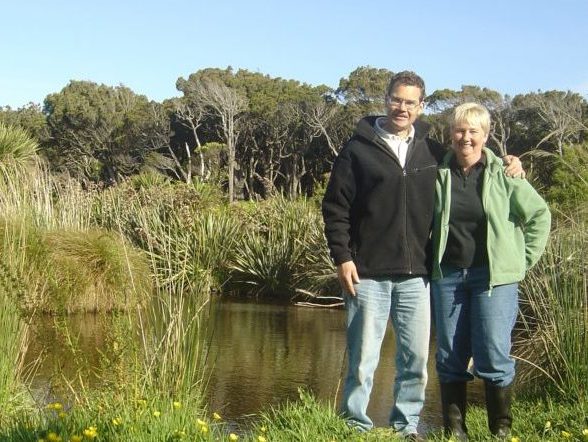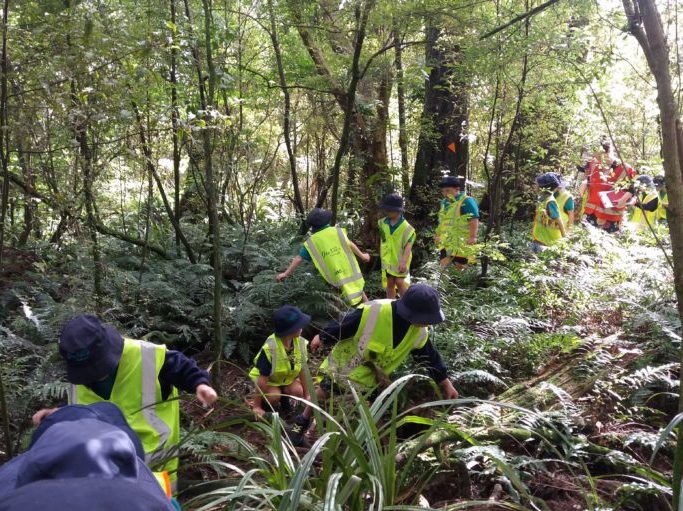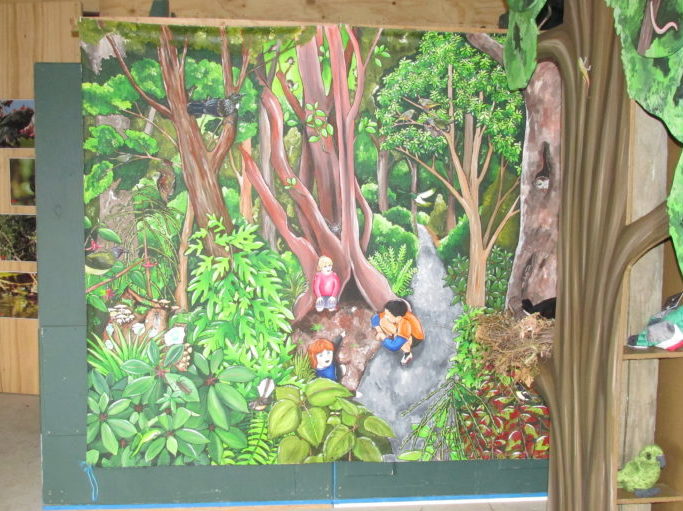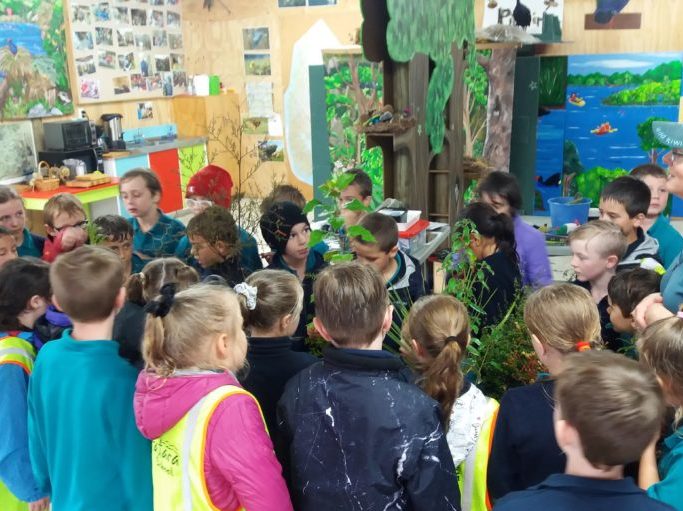It’s been 6 years since Southland Community Nursery near Invercargill, opened its Education Centre and in that time thousands of people – particularly school children – have visited the property, explored the restoration area via the gravel tracks, learnt about local native plants and discovered a myriad of fascinating creatures in the ponds and native forest.

Visitors can walk in a 500-year-old kahikatea forest remnant, restored forest and wetland areas, learn how forests work and what layers they are made up of and explore the different parts of a wetland system.
Chris Rance runs the Community Nursery and Education Centre which are built on land owned by Chris and husband Brian. Part of the land, including the kahikatea remnant forest and restoration area (once just a paddock), were placed under QEII covenant in 1999.
“We have been restoring native forest on our land in Otatara since 1996. We also created two ponds, which have been planted with native wetland species,” says Chris. “Our vision for habitat restoration did not stop at the boundary fence. We established the Community Nursery on our property so that people can come and learn how to grow their own native plants for free.”

Brian is a professional botanist and Chris is a full-time volunteer after a career as a computer mapping analyst for the Department of Conservation. Chris believes in learning by doing.
“The best way for children and young people to learn about nature and the environment is to be out in the environment. We believe it’s important that children are able to have hands-on learning outdoor experiences in a safe environment,” she says. “After running the Southland Community Nursery for over 20 years we enhanced the learning opportunities six years ago by building a specially designed Nature Education Centre.”
Invercargill’s best facility for “all weather” hands-on environmental learning consists of an enclosed workshop/classroom (12m x 12m) – suitable for messy activities such as potting up seedlings.
“Pests also figure on just about every school visit here as we are located adjacent to the Bushy Point project and also have traps and stations set all around our pond and bush block that the kids walk around,” says Chris. “We have also held two pest workshops for adults this year”
Chris feels people don’t always value what’s in their own location – so the educational programmes offered by the Centre focus on what’s special to their site – with site specific resources.

“Children can find out about the New Zealand native plants that live in Southland and thrive in our conditions here and see why plants are so important and what part they play in our New Zealand forest habitat. They can be a botanist by exploring plant terminology, classifying plants and looking at the names of plants and explore the traditional, medicinal and current use and values of plants.”
There’s also the opportunity to get hands on with seed collecting, sowing seeds, taking cuttings and potting up, utilising the nursery set up, and pond and bush tracks. Searching for seeds and looking at native plants, seed collecting, seed cleaning, discovering the way seeds are distributed, identifying parts of a seed and discovering how to grow and care for native plants are all part of the learning experience.
Learning resources are designed to be fun and include a range of Activity Cards on topics such as:
- Beaut Bugs – how many bugs can you find?
- Leaf Bingo – an easy and fun way to learn how to identify native plants.
- Leaf Bingo Maori Uses – learn about traditional Maori uses for some of our native plants
- Who am I? – animal pests
- Who am I? – birds
- Who am I? – lizards and frogs
- Who did that? – put your detective hat on
- Plant ID Course Cards
“The educational resources and all our artwork and website were done by a local woman Janet Hodgetts,” says Chris. “She’s amazing. I often have ideas and she puts them into practice very expertly!”
Janet has created murals, an interactive tunnel, paintings and the activity sheets to inspire children who visit the Centre.

“Janet lives in Invercargill and specialises in ‘nature interpretation’. A self-taught artist, Janet is a scientist by training and has a style that is realistic but fun,” Chris says. You’ll often find an interactive element to her work which makes them very captivating for children.”
Giant bugs have invaded the Nature Education Centre! They are the work of Trevor Huggins, who makes sculptures from recycled tools and old machinery and, thanks to Lotteries funding, the Centre currently employs educator, Bronwyn Graham to help with the school educational programmes.
“I really want to acknowledge the work Bronwyn Graham has done for our education programme this year, thanks to a successful Lotteries Funding bid,” says Chris. “Bronwyn works with classes for 20 hours per week. Previously the Centre has been run entirely by volunteers and volunteers will be still be required to support Bronwyn as we often have 30-40 kids per session.”
Learning also reaches beyond the Education Centre and Nursery as educators work with schools to propagate plants for their school grounds and local reserves. The local branch of Forest and Bird also uses half of the Education Centre for its KCC (Kiwi Conservation Club) programme, helping to raise the next generation of enthusiastic conservationists.

